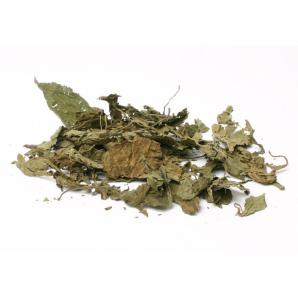
Dried Salvia leaves can be purchased legally, but it is best to buy from reputed sellers ( click image to be taken to recomended shop ).
When teen star Miley Cyrus was recently photographed smoking from a bong during a party at her L.A. home, her publicity machine was quick to point out that Cyrus, of Hannah Montana fame, was smoking salvia, not marijuana. That tidbit may or may not have been effective as damage control; either way, it focused the hot lights of the media on a substance that has been quietly gaining in popularity.
Sage Advice
Salvia divinorum is known for its pyschactive properties. It does not provide the same kind of even buzz as cannabis. It is believed to have been used by indigenous shamans in the Mexican state of Oaxaca. At higher levels of use, it can produce a trance-like state. Mild doses will alter one’s aesthetic and sensory experience. Aside from the totally different effects, the biggest difference between the salvia and marijuana is that salvia is legal – although there is now prohibitionist pushback in that direction, too.
Fire It Up
When purchased commercially (as opposed to grown at home), salvia comes in the form of dried leaves extract that are already suitable for smoking through the same kinds of bongs or pipes associated with marijuana use. Salvia requires temperatures greater than vaporizers can attain to release its chemical compounds, so it must be fired in a bowl. The smoke is said to be harsher and more irritating than that of cannabis, and would clearly present the same health concerns as any smoke.
Aficionados of salvia are clearly not looking for the same thing in a plant as the smokers of marijuana. The former are seeking a different plane of consciousness. Theirs is a vision quest. Stoners just want to get stoned. If it gets spiritual, all to the good. Just as tobacco’s legal status makes no sense in the context of the war on drugs, salvia’s legal status shows us that none of God’s green plants belong on anybody’s list of controlled substances.
